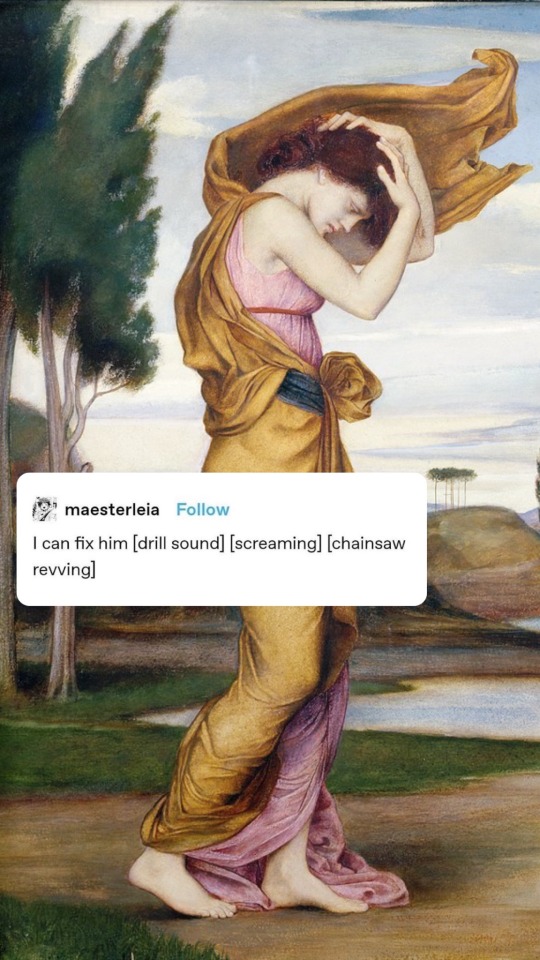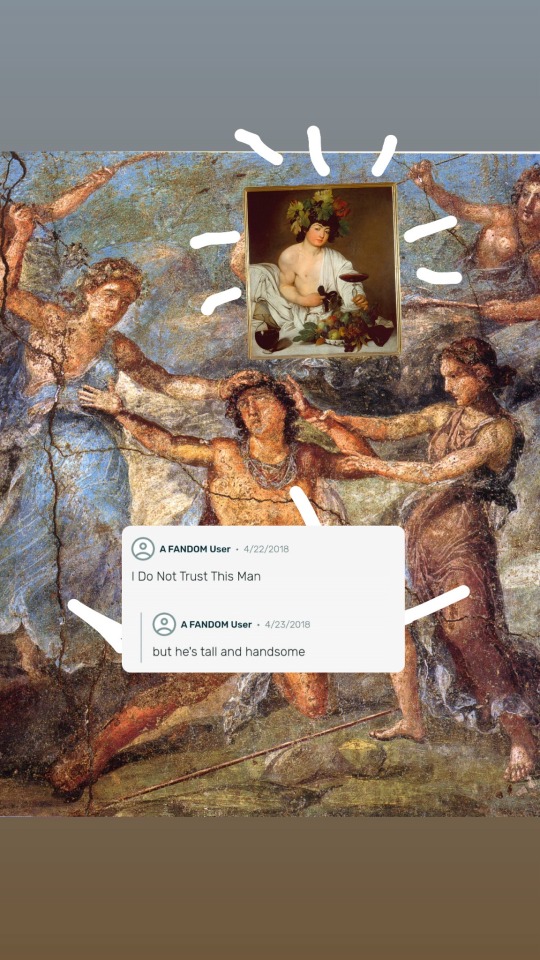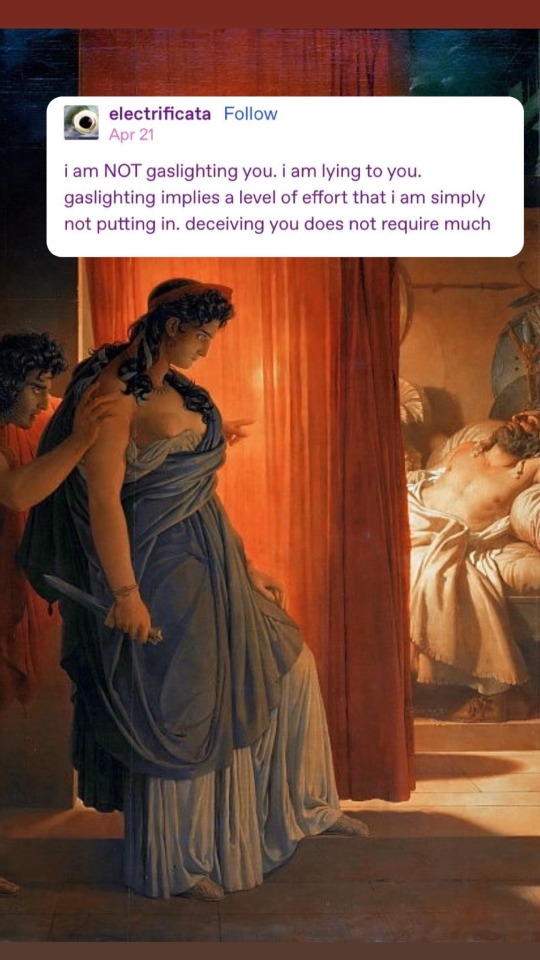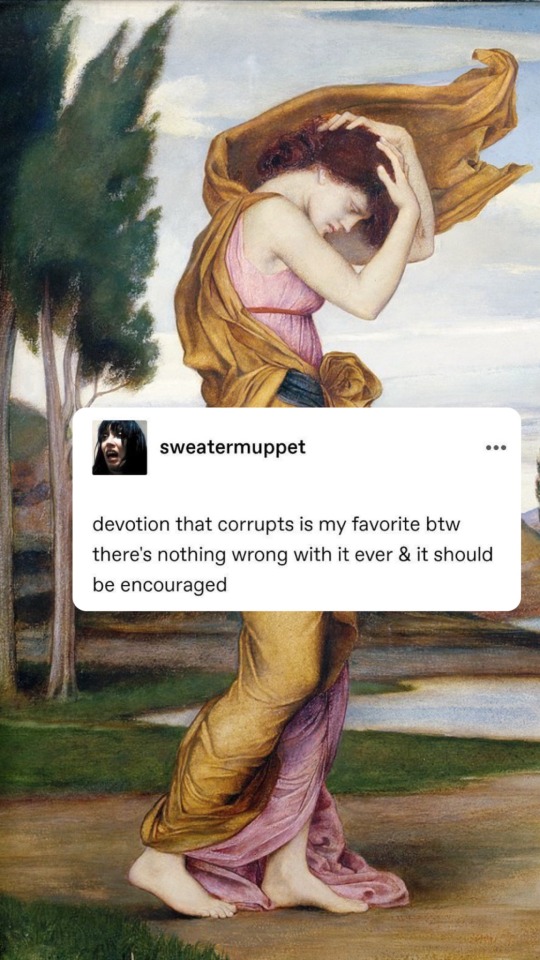Fuuuuck That Is My Circus. Are Those…? Yep… Those Are My Monkeys….. Goddammit.
fuuuuck that is my circus. are those…? yep… those are my monkeys….. goddammit.
More Posts from Just-kinda-here567 and Others
random jonathan crane headcanon. i believe he should say "terrific" a lot more, to the point it's annoying. double-meaning jonathan crane — its original meaning describes something terrifying, whereas today, it describes something splendid. i believe he may appreciate the ease of using one word to describe two conflicting ones.
Cult of the Lamb - Head Trauma












Been influenced quite a bit with how comics here on tumblr are formatted, so I've been experimenting lately with how I possibly want to upload sketches and stuff in the future--these little comics were mostly experiments on how high or low effort I would like to go.
In other news, I've finished this game twice now. I'm officially a follower and I've got ideas spinning in my head. This bodes poorly for me.









Scarecrow: Year One
Putting my text post hands to classical use
✨main characters in my working thesis on Greek tragedy: there’s a murder in the oikos✨








(pt2)
Writing Descriptions
I was just musing recently about this, so thought I’d share some bits about how I try to build compelling descriptions of scenes/environments. Normally I just post fan art but eh, diversifying lol.
Having an agenda
I found both reading and writing descriptions that if I don’t have an objective for them they end up feeling aimless and sometimes forgettable. I am always trying to build a narrative. It can be as simple as “this building is old/unused” or as complex as ‘contrasting a bright atmosphere with an underlying coldness as an allegory to a character’s crushing isolation in the face of their personal grief/pain’. What does every line and descriptive word contribute to what you’re trying to do? What emotions or vibes are you trying to evoke? How does every part of it tie together into a cohesive picture instead of a bunch of disparate parts?
2. Utilizing descriptions as a tool
descriptions inherently tend to center a story in a specific setting, or serve as our senses to experience the story alongside the characters — but I try to use it as more than that when possible. How you can use it may vary with what person you’re using, but even third person (what I typically use) descriptions can give you a glimpse into the headspace of your character. This can be really helpful when writing a character who isn’t very emotionally self aware, or a character who is stoic. I typically use this one of two ways.
First one is seeing through the eyes of the character. How do they see this other character? How does their emotions, history, etc affect their impressions about different settings? For example, a characters with religious trauma might have a more negative/emotionally loaded perspective when walking into a church which can manifest at different levels of subtlety within the description of the environment.
second one way is just to get the reader on the same page emotionally as a character. If the character is desperate, incorporate that emotions/vibe into your description of the setting or even of them. If they’re lonely invoke that, etc. Note that this can also be used for plot beats and not just character moments.
Also total side note, but I’d reccomend not taking any writing advice too seriously. Explore how people write their stuff, take little tidbits here and there when it speaks to you and your style, and toss aside anything that doesn’t work for you.


Conflicting character development
Alternatively
"When your mom is a better grandma than she was a parent"




Witches and sorcerers casting spells together on Halloween. How wholesome.
Doctor Strange Annual (2019)
What To Do About Filler
I am deeply frustrated at the increasing usage of the concept of "filler" in writing, partly because how people are using it is completely separated from what it usually means, and partly because few people explain what they actually mean when a story lacks "filler."
So, in short, when this comes up, what people usually are talking about is:
A lack of subplots. Subplots are essential background to developing your story beyond the main action points. Subplots include romantic storylines, internal journeys (learning to deal with a trauma, for example), plots that are critical for secondary characters, etc.
No room to breathe (aka pacing). Keeping up the tension is a common piece of advice, but if every single scene is filled with tension, you're going to exhaust the reader (and yourself). Quieter moments allow characters to reflect, realize things (like feelings for each other), and give you space to establish worldbuilding and mood.
Rushed or missing character development. Giving your characters space to learn things about themselves, confess or realize feelings, and moments to make decisions and change are essential to a story. Defeating the big bad is important, but usually the inner strength to do so comes from the character changing over the course of the story.
I am losing the battle against using the word filler when you mean a story lacks other things. Other than shaking my fist at the youths, I suggest that if you get feedback about "filler," see if you can get specifics. Is it an issue with pacing? Character developments? Not enough description or worldbuilding? If a romance seemed rushed, at what points does the reader think there should be more interaction? Etc.
A note for fanfic writers: Your goals are often different from someone writing to publish, but hammering down what filler means can still help you as well. Narrowing down the point of your story ("in this drabble, these characters flirt without using words" or "sexy coffeeshop AU") and making sure to ask your beta readers if what you're writing fulfills that goal can help you figure out if your story is making the impact you want.
-
 werewolfcutieocs reblogged this · 3 weeks ago
werewolfcutieocs reblogged this · 3 weeks ago -
 yarnrocks liked this · 3 weeks ago
yarnrocks liked this · 3 weeks ago -
 hipztergopteryx liked this · 3 weeks ago
hipztergopteryx liked this · 3 weeks ago -
 1q84 liked this · 3 weeks ago
1q84 liked this · 3 weeks ago -
 furiouslyshittingturtle reblogged this · 3 weeks ago
furiouslyshittingturtle reblogged this · 3 weeks ago -
 placidsloth reblogged this · 3 weeks ago
placidsloth reblogged this · 3 weeks ago -
 iamafriendsupposedly liked this · 3 weeks ago
iamafriendsupposedly liked this · 3 weeks ago -
 unethicalbagel liked this · 3 weeks ago
unethicalbagel liked this · 3 weeks ago -
 torahammas reblogged this · 3 weeks ago
torahammas reblogged this · 3 weeks ago -
 torahammas liked this · 3 weeks ago
torahammas liked this · 3 weeks ago -
 nyaamraw reblogged this · 3 weeks ago
nyaamraw reblogged this · 3 weeks ago -
 nyaamraw liked this · 3 weeks ago
nyaamraw liked this · 3 weeks ago -
 doccyuk reblogged this · 3 weeks ago
doccyuk reblogged this · 3 weeks ago -
 nann-the-explorer liked this · 3 weeks ago
nann-the-explorer liked this · 3 weeks ago -
 thankyoucaptainawkward liked this · 3 weeks ago
thankyoucaptainawkward liked this · 3 weeks ago -
 medsteeth liked this · 3 weeks ago
medsteeth liked this · 3 weeks ago -
 skylee-spider-lillis liked this · 3 weeks ago
skylee-spider-lillis liked this · 3 weeks ago -
 chaoticgoodcryptid reblogged this · 3 weeks ago
chaoticgoodcryptid reblogged this · 3 weeks ago -
 chaoticgoodcryptid liked this · 3 weeks ago
chaoticgoodcryptid liked this · 3 weeks ago -
 theclownfromdowntown liked this · 3 weeks ago
theclownfromdowntown liked this · 3 weeks ago -
 coyotekisses liked this · 3 weeks ago
coyotekisses liked this · 3 weeks ago -
 better-name reblogged this · 3 weeks ago
better-name reblogged this · 3 weeks ago -
 heavenbloom liked this · 3 weeks ago
heavenbloom liked this · 3 weeks ago -
 beetlelegs12 reblogged this · 3 weeks ago
beetlelegs12 reblogged this · 3 weeks ago -
 beetlelegs12 liked this · 3 weeks ago
beetlelegs12 liked this · 3 weeks ago -
 mirrorghoststhings liked this · 3 weeks ago
mirrorghoststhings liked this · 3 weeks ago -
 adelaidagreenflower liked this · 3 weeks ago
adelaidagreenflower liked this · 3 weeks ago -
 art3mis11 reblogged this · 3 weeks ago
art3mis11 reblogged this · 3 weeks ago -
 art3mis11 liked this · 3 weeks ago
art3mis11 liked this · 3 weeks ago -
 littlebirddraws liked this · 3 weeks ago
littlebirddraws liked this · 3 weeks ago -
 balisonged reblogged this · 3 weeks ago
balisonged reblogged this · 3 weeks ago -
 salamanderdr liked this · 3 weeks ago
salamanderdr liked this · 3 weeks ago -
 404anerroroccurred404 liked this · 3 weeks ago
404anerroroccurred404 liked this · 3 weeks ago -
 farawayandlost reblogged this · 3 weeks ago
farawayandlost reblogged this · 3 weeks ago -
 i-am-agony reblogged this · 3 weeks ago
i-am-agony reblogged this · 3 weeks ago -
 i-am-agony liked this · 3 weeks ago
i-am-agony liked this · 3 weeks ago -
 nxns3sne reblogged this · 3 weeks ago
nxns3sne reblogged this · 3 weeks ago -
 nxns3sne liked this · 3 weeks ago
nxns3sne liked this · 3 weeks ago -
 pseudomonaslisa reblogged this · 3 weeks ago
pseudomonaslisa reblogged this · 3 weeks ago -
 rayray1411 liked this · 3 weeks ago
rayray1411 liked this · 3 weeks ago -
 gizdathemxel liked this · 3 weeks ago
gizdathemxel liked this · 3 weeks ago -
 nightyraven-art reblogged this · 3 weeks ago
nightyraven-art reblogged this · 3 weeks ago -
 froggyinfear liked this · 3 weeks ago
froggyinfear liked this · 3 weeks ago -
 alexandreacole reblogged this · 3 weeks ago
alexandreacole reblogged this · 3 weeks ago -
 raveneyeart liked this · 3 weeks ago
raveneyeart liked this · 3 weeks ago -
 alexcole1326 liked this · 3 weeks ago
alexcole1326 liked this · 3 weeks ago -
 starycircus reblogged this · 3 weeks ago
starycircus reblogged this · 3 weeks ago -
 starycircus liked this · 3 weeks ago
starycircus liked this · 3 weeks ago -
 anarzaabloodladen reblogged this · 3 weeks ago
anarzaabloodladen reblogged this · 3 weeks ago

Joined 1/12/25 | New to this/still figuring out the website | She/Her please :)
131 posts










